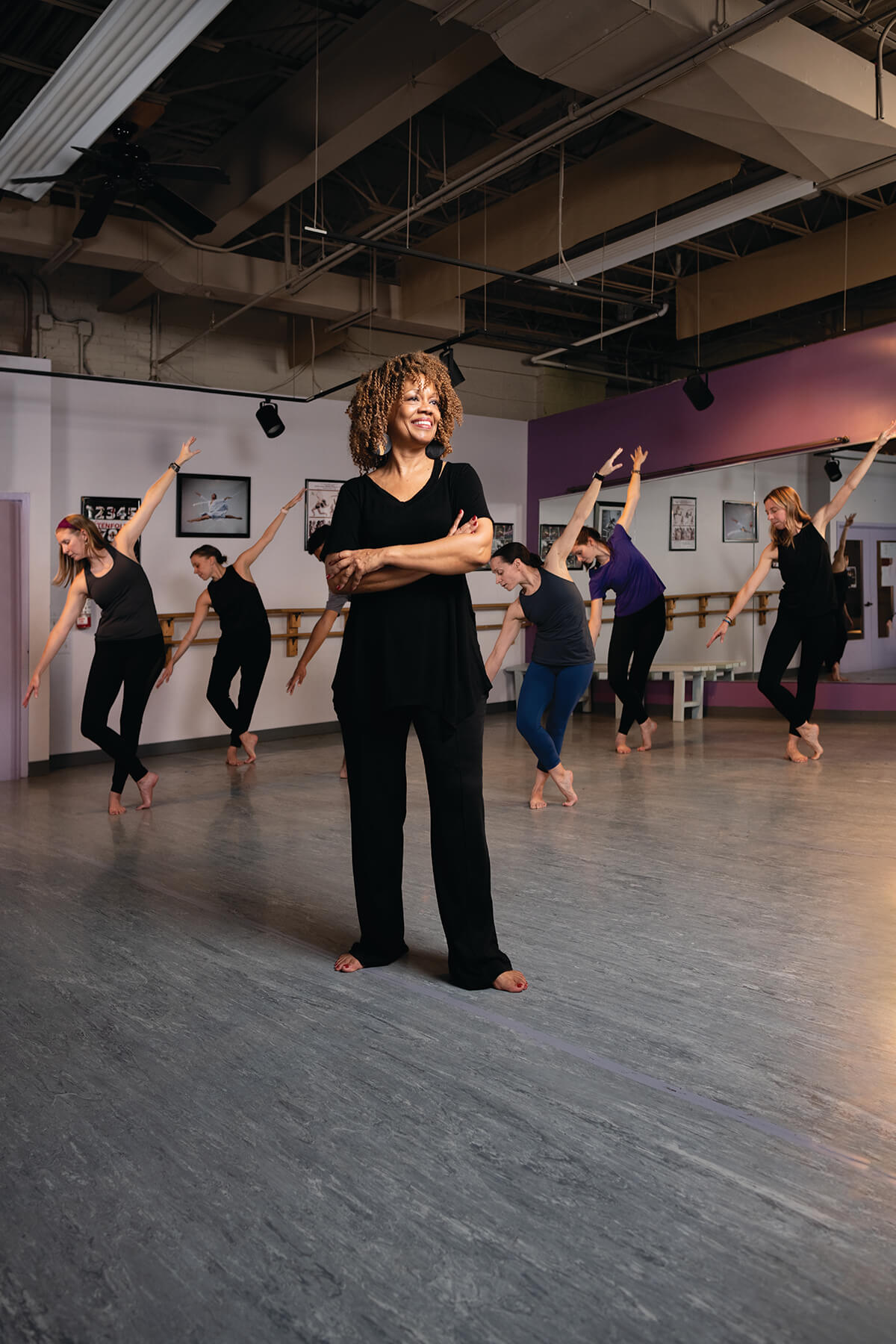Arts & Culture
Full Circle Dance Company Uses Performance as a Vehicle for Storytelling
Celebrating 22 years, the city's preeminent modern dance company has become known for its thematic choreography featuring a diverse array of members.

On a summer Thursday around 9 p.m. at Morton Street Dance Center in Woodberry, the Full Circle Dance Company is halfway through one of their biweekly classes. Dressed in leggings and a T-shirt like her students, Donna L. Jacobs scans the room and counts them off.
“And three, four, five, six, seven, eight—step right, left, back, and release,” says Jacobs, pictured, standing on the sideline as the dancers work their way through combinations. “Parallel, put it down. Questions?”
There are spurts of laughter here and there as Jacobs continues her instruction. But when the lesson is over—and the real rehearsal begins—the mood tones down as each dancer takes their position on the floor. Kicking, pushing, twisting, and embracing to the sounds of wistful music from a laptop in the corner, the group is in the final stretch of polishing a piece for their next performance.
“This is a freedom for us,” says Jacobs, founder and artistic director of Full Circle. “Our dancers come from all walks of life…but we shed all of those things when we walk into the studio at night. We share this common thing that many of us have done for all of our lives. It’s an amazing journey.”
In 1991, during a meeting of the Greater Baltimore Committee’s leadership program, members, including Jacobs, were given a vision exercise to explore whether they would still be satisfied with their life in the next five and 10 years. At the time, she was a lawyer, but she spent her free time practicing dance—a passion she’d started as a toddler and fostered at the Bernice Johnson Dance Studio in her hometown of Queens, New York. She opened Morton Street a year later.
“I knew that there were so many children—particularly children of color—who could benefit from the experiences that dance had to offer,” says Jacobs, whose students range from age three to adults. “I wanted to create the kind of opportunities that I had in my youth here in Baltimore.”
In the years that followed, she also found herself craving more opportunities for Morton Street’s instructors to share their art outside of teaching, which led to the creation of Full Circle in 2000. Now the city’s preeminent modern dance company, the group has become known for its thematic choreography, featuring a diverse array of members—mostly female, of different races, skill sets, and career backgrounds—with performance used as a vehicle for storytelling that shines a light on the human condition.
“That’s what we can do with dance—we tell stories,” says Jacobs, noting that some stories are more difficult to tell than others, with performances drawing on themes such as domestic violence , race, motherhood, and religion.
On November 19 and 20, Full Circle will team up with the Baltimore Theater Project to present HOME: Longing and Belonging a new exploration of the idea of home as a place, feeling, and state of being. Performances will delve into a variety of subjects, from marriage, aging, and caretaking to immigration, historically Black colleges, and homelessness.
Jacobs’ central piece, titled Home/Less, aims to capture how quickly an individual can become unhoused, and, in turn, unseen, which she witnessed firsthand through her last two decades of work with the University of Maryland Medical System, where she was previously senior vice president for government, regulatory affairs, and community health. (She has since retired.)
Looking back on 22 years with Full Circle—and 30 with Morton Street—Jacobs takes great pride in the community that her dancers have helped nurture.
“Knowing that many of our dancers have been here for a long time is important to me,” she says. “We have those who are still here, and those who have moved away, yet they all feel like Full Circle is their home. I’m proud of our longevity. I’m proud that people keep coming home.”